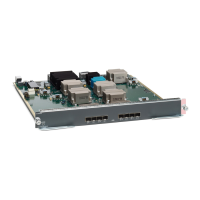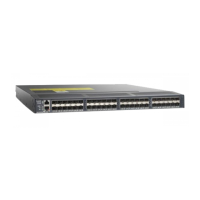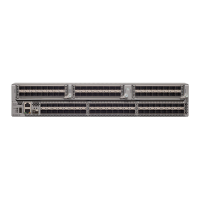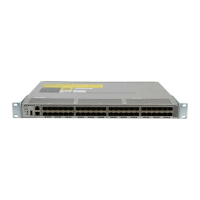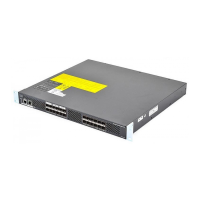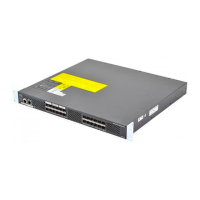Send documentation comments to mdsfeedback-doc@cisco.com
4-3
Cisco MDS 9000 Family Fabric Manager Quick Configuration Guide
OL-7765-02
Chapter 4 Configuring VSANs and Interfaces
Creating VSANs
You see the Create VSAN dialog box. (See Figure 4-3.)
Figure 4-3 Create VSAN
Step 2
Complete the fields in the Create VSAN dialog box.
• Select the switches that you wish to assign to the VSAN. For example, in Figure 4-3, switch_name
is the switch selected to be assigned to a VSAN.
• Select a VSAN ID for the VSAN.
• Assign a name to the VSAN. For example, in Figure 4-3, VSAN_test is the assigned VSAN name.
• Select the type of load balancing used on this VSAN. We recommend that, for this setup, you select
the srcdst Ox-ld option, which is the default option.
–
srcdst—Use source and destination ID for path selection.
–
srcdst Ox-ld—Use source, destination, and exchange IDs.
• Select the interoperability value configured for the local switch on this VSAN. We recommend that,
for this setup, you select the default option.
• Select the Admin State for the VSAN. We recommend that, for this setup, you select the active
option, which is selected by default.
• Check the Static Domain IDs check box to assign a persistent domain ID to the VSAN. For
example, in Figure 4-3, the domain ID for the switch is 1; this ID is the domain ID assigned to the
switch on VSAN_test.
See Appendix B, “Configuring Static Domain IDs and Persistent FC IDs,” for details.

